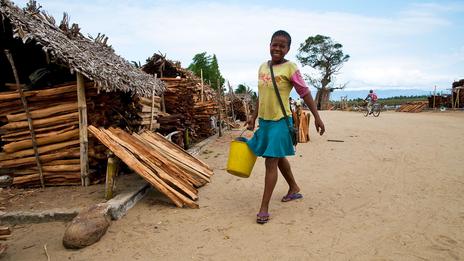This post may contain affiliate links. We may earn money or products from the highlighted keywords or companies or banners mentioned in this post.
While some readers described routes that traverse one of the world’s coldest regions, or tunnels that only measure 4m wide, other respondents took our question to its limit, recommending roads that were not only interesting, but dangerous as well. In those cases, the roads are less frequented for a reason: read on for terrifying drop-offs, unpredictable mudslides and a complete lack of concrete paving.
National Road 5, Madagascar
For National Road 5, which runs north-south between the towns of Maroantsetra (pictured here) and Soanierana-Ivongo on the African country’s east coast, “you need to hire both a driver and a mechanic,” said Anders Alm, chief technology officer for WAU, a travel agency that provides regular trips to the area. If you’re “bored of concrete”, he added, this drive – which he called “the worst road in the world” – would be one way to change it up.
With sections of sand, solid rock and even worn-down bridges that drivers must inspect before crossing, the 200km road takes nearly 24 hours to drive. It turns especially treacherous during the rainy season (December to March), when the lack of asphalt or concrete paving leads the road to become impassable in many spots.
The upside? Most of National Road 5 runs along the white sand coastline, providing spectacular views of palm tree forests and the Indian Ocean.

- Madagascar's National Road 5. (Olivier Cirendini/Getty)
Rohtang Pass, India
Rohtang means literally, “pile of corpses” – a name that stems from the deadly mudslides that often cover the 4,000m-high road in the eastern Himalayas. Not to mention the area’s generally unpredictable weather, including snowstorms and sudden avalanches.
“Each season, road crews use GPS to find the road and dig it out again,” said Witold Chrab, a Washington DC-based engineer who drove a motorcycle across the pass in 2011. Once cleared, the pass generally remains open from May to November – though snow can make it impassable at any time; in 2010 it left 300 tourists stranded. An 8km tunnel is being constructed beneath the pass to provide a safer option, but the original route, which connects the Kulu, Lahual and Spiti valleys in northernmost India, lures visitors with views of rugged mountain ranges, sprawling valleys and even a mountain goat or two.

- India's Rohtang Pass. (Praphat Rattanayanon/Getty)
Transfăgărășan Road, Romania
While well-known in the world of auto enthusiasts – its 90km of hairpin turns and dramatic descents earned it the title of “best road in the world” by the BBC Top Gear crew – fewer casual drivers know of Romania’s second-highest road. Built as a military route in case of an invasion in the 1970s, the road connects the two tallest mountains in the Southern Carpathians, Moldoveanu and Negoiu, and ascends a total of 2,034m in altitude.
“If you like changing gears every three or four seconds, you know it's fun,” said Romanian native Razvan Baba. Even more fun? Nobody tends to be around to enforce the 40km/h speed limit, Baba said – though the hairpins make it tough to go much faster.

- Romania's Transfăgărășan Road. (Hutch Axilrod/Getty)
Eyre Highway, Australia
Carl Logan, a police officer from Perth, warned readers that this 684-mile stretch in southern Australia might seem “plain and boring” at first glance, but actually holds plenty of adventure – particularly with its animals. “You might see kangaroos, emus and sometimes even camels,” he said. The wildlife also makes the route riskier, as a wandering animal can seriously damage an oncoming car.
The most dangerous time to take on the highway – which runs between the towns of Norseman and Ceduna – is dawn or dusk, when most wildlife attempts to cross the road. But those who do drive at nightfall will be rewarded. “Because there is no civilisation, the night stars will be the brightest you've ever seen,” Logan said.













